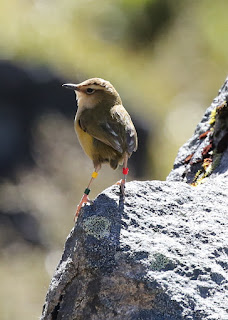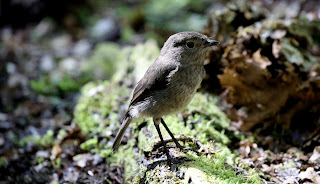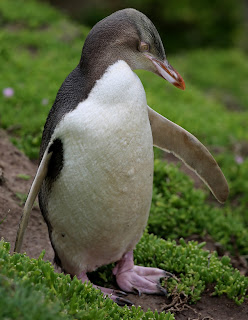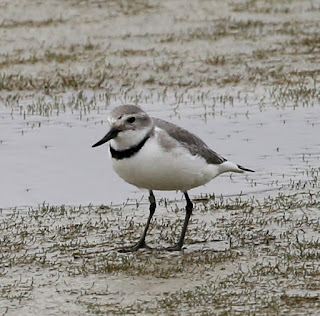We left Stewart Island on 11th November, on the early morning ferry. It was a calm crossing & seabirds were thin on the ground, but we did see both Broad billed Prion & Mottled Petrel, species which we had looked for but not seen the previous day. I didn't manage any photos of either species.
We drove through some very scenic surroundings.
A colony of Black billed Gulls.
From Te Anau the scenery slowly changed from
scenic to increasingly spectacular.
The start of Milford Sound
The valley is clothed in forest
Just before the tunnel.
We walked up this track to Rock Wren territory!
It really is amazing!
The viewpoint before the tunnel.
Errm!
The endemic Rock Wren
Most birds in this valley bear rings.
A small bird but a big prize!
Looking back down the valley, away from the tunnel.
Looking out into the sound.
Yes, its me again!
Just to prove I was at this amazing place!
Views on driving back down the valley.
Fantastic trees!
It really was a Lord of the Rings moment!
A young South Island Robin
The next day was mainly a travelling day & the weather was fairly mixed. It was pretty cold & windy when we pulled up at the Yellow eyed Penguin breeding colony. This is a small colony & birds come & go at erratic intervals throughout the day, so we were lucky to get one bird close up & he/she performed beautifully!
Yellow-eyed Penguin
We them moved on to the rather historic town of Oamaru, where we saw plenty of Otago Shags. .
This part of the coast is home to the Otago Shag, which is thought to be a split from Stewart Island Shag. If recent research is validated, then Stewart Island Shag will be split into two species: Foveaux Shag & Otago Shag.
It is pretty bleak around here!
Looking at Wrybills.
Wrybill
Some birds had already moved from the coast
to their mountain river breeding grounds.
Yes, they are!
Black Stilt
A bit of a territorial scrap with Pied Stilt.
Black Stilts won this round.
All true, non hybrid Black Stilts are ringed.
The next day (12th November) we continued north into the semi arid Mackenzie Basin & the home of another iconic New Zealand endemic, the Black Stilt. This species is slowly recovering from its previous perilous state & today has a known population of around 270 individuals. We managed to see 27 birds which is around 10% of the entire population.
South Island Pied Oystercatcher
Nesting on the shore of the lake
Banded Dotterel
New Zealand Great Crested Grebe
New Zealand Scaup
In the afternoon we drove to some salmon breeding ponds & we had great views of the New Zealand Great Crested Grebe. This could well be another future split.











































































No comments:
Post a Comment